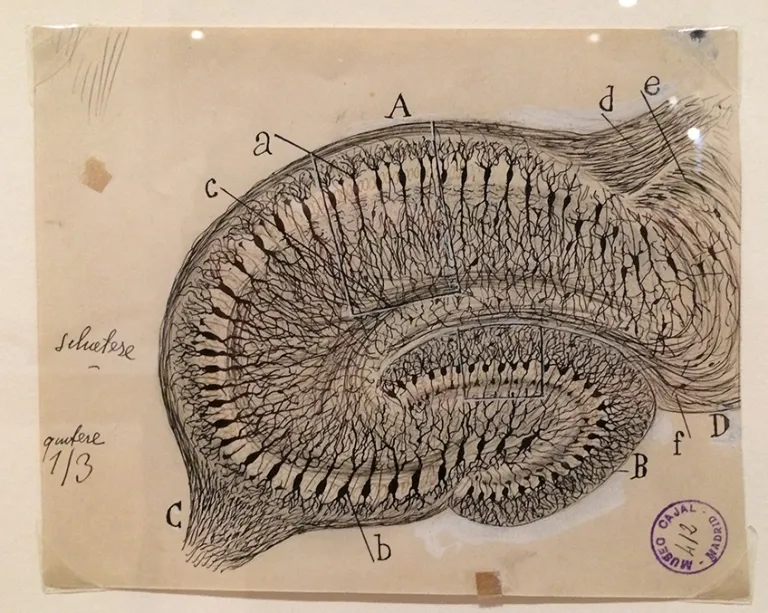How do you remember your name? Thank your hippocampus, a part of the brain that lies buried in the cerebrum and plays an important role in memory. The hippocampus looks like a seahorse when removed from the brain and hence the name (derived from Hippokampus, the Greek word for seahorse). Our brain consists of two hippocampi, one in each brain hemisphere.
One of the most striking feature of the hippocampus was observed by the Nobel laureate, Santiago Ramón y Cajal, in the 19th century. Cajal recorded his microscopic observation of the hippocampus in the form of beautiful hand drawings:

He documented that neurons were arranged in unique layers in the hippocampus, a ground-breaking observation that proved to be useful several years later in studying how these neurons communicate with each other and form a circuit (think of it like a logic gate) for collecting and storing memories.
What is the function of the hippocampus?
In the 1950s, a patient named Henry G. Molaison, referred to as patient H.M., suffered from a severe form of epilepsy and went through a surgical procedure where a portion of his brain was removed in an effort to treat epilepsy. His surgery was of moderate success. He managed mild epilepsy for the next 58 years, however, he tragically lost the ability to form new memories as most of his hippocampi were removed during surgery.
H.M. served as the longest case study in history to understand the formation of memory in humans. The hippocampus is important for formation of new memories that we experience, known as explicit memory. This mostly involves remembering facts or events and over a period of time they get stored away permanently as long-term memory by a process called memory consolidation.
From H.M.’s case study it was clear that he was unable to form new memories as he lost the ability to consolidate them for future use. However, some of his long-term memory before the surgery such as events from his childhood or facts about his parents remained intact. This was fascinating for scientists as they were able to conclude that the hippocampus is necessary for memory consolidation but not for memory retrieval – a process required for recollecting memories from the place it was stashed away (this storage space could be in other brain regions), as in the case of H.M.’s older memories before his surgery.
The hippocampus also acts like a GPS in our brain and is important for another type of memory called spatial memory. Groups of cells in the hippocampus called “place cells” co-ordinate with another group of cells called the “grid cells” that exist in another brain region, and help us remember directions and navigate the space around us. The scientists who discovered these cells, John O’Keefe, May Britt-Moser and Edvard Moser were awarded the 2014 Nobel Prize in Physiology and Medicine.
How is the hippocampus affected in neurological disorders?
Many neurological disorders have ties to dysfunction/degeneration of the hippocampus. Most notably is Alzheimer’s disease (AD), with one of the earliest AD disease symptoms being the loss of spatial memory and short-term memory. A previous article summary in our website also explores how an ataxia related gene increases the risk for Alzheimer’s disease.
If you would like to know more about the story of H.M. and how he transformed our understanding of memory, you can learn more by reading “Permanent Present Tense” by Suzanne Corkin.
If you would like to learn more about the hippocampus, take a look at these resources by Medical News Today and Verywell Mind.
Snapshot written by Dr. Chandana Kondapalli and edited by Dr. Hayley McLoughlin.










